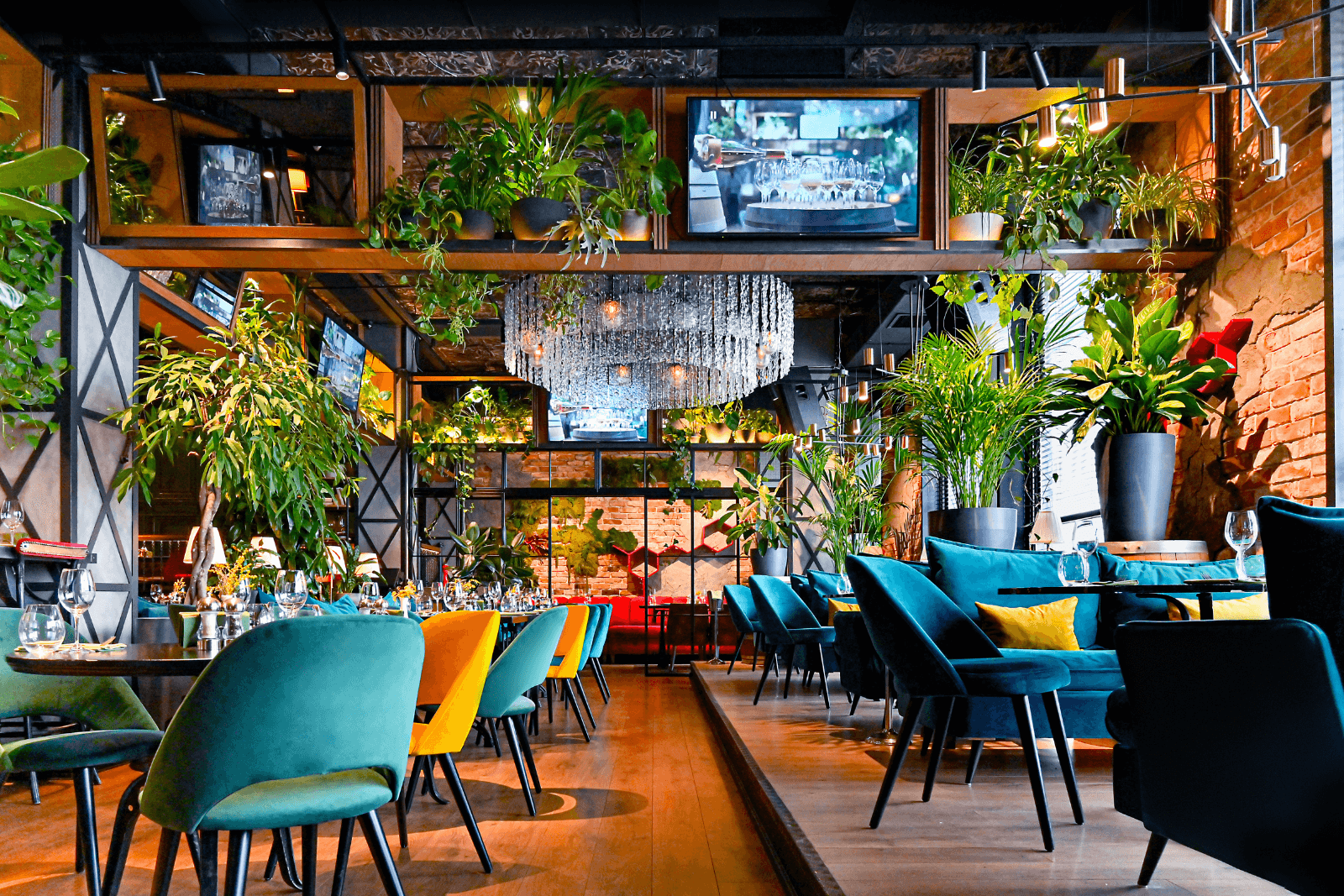The crowds pouring through your restaurant’s door at dinner time always expect immaculate service and a memorable experience.
This means that even the smallest misstep or delay can cost you in both reviews and future revenue.
Have no fear, though.
In this article, we’ll provide you with five tips for improving the efficiency of your restaurant so that you can better serve your customers, as well as prevent any unnecessary expenses to your business.
Your first step is to take a look at the way you train your staff.
Table of contents
- Ensure Your Staff Gets Proper Training
- Encourage Your Staff to Communicate
- Make Sure Your Kitchen Is Organized
- Keep Track of Your Restaurant’s Inventory
- Invest in a Restaurant Reservation System
- Conclusion
Ensure Your Staff Gets Proper Training
Employee training is vital for the success and healthy functioning of a restaurant.
Without it, your staff will lack the necessary confidence to carry out their tasks and may become disengaged at work.
In fact, research has shown that the link between employee training and engagement is exceptionally strong:
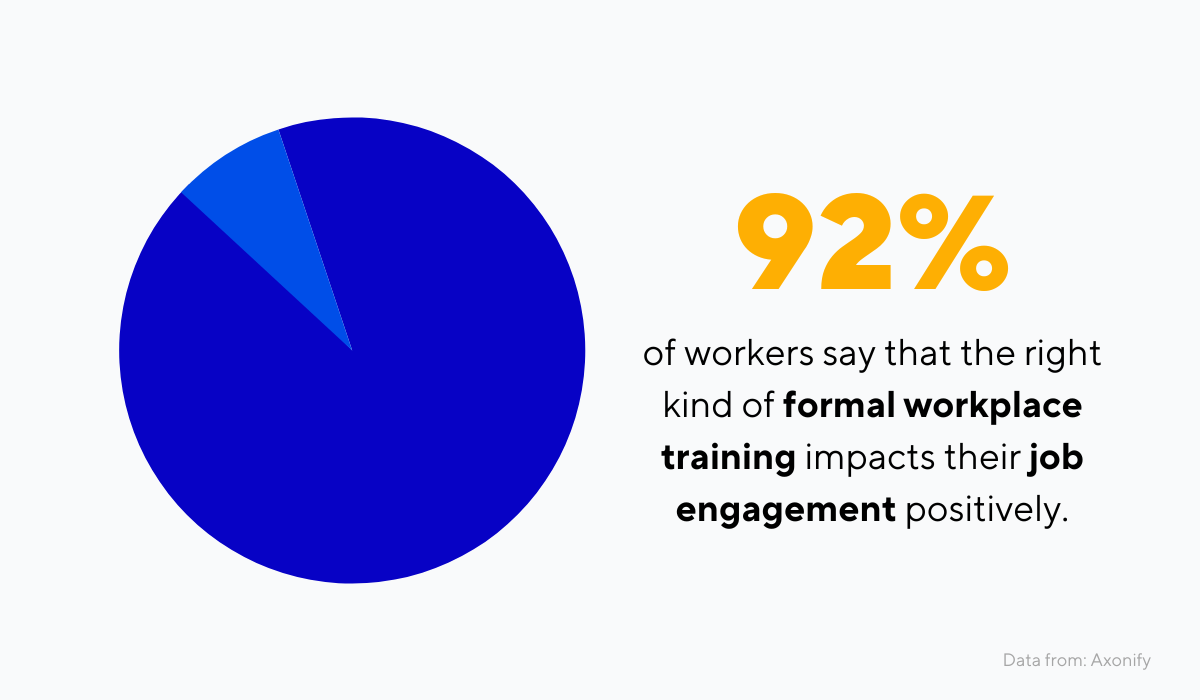
Source: Tablein
Carol Leaman, CEO of Axonify, the industry leader in corporate learning, explains why training is so important.
If employees don’t have the correct training to perform their jobs properly, they will disengage. This, in turn, will result in work quality, productivity and customer satisfaction issues.
One-size-fits-all training programs are no longer enough. Instead, a more individualized and continuous approach to learning is necessary to help workers develop their individual strengths, which can positively impact their job success and the company’s bottom line.
The key term here is individualization. Different roles at a restaurant have different training needs, so an individualized approach is needed here.
A concept that might help you create training programs for every role on your staff is the training tree.
Here’s what it would look like for your front-of-house staff:
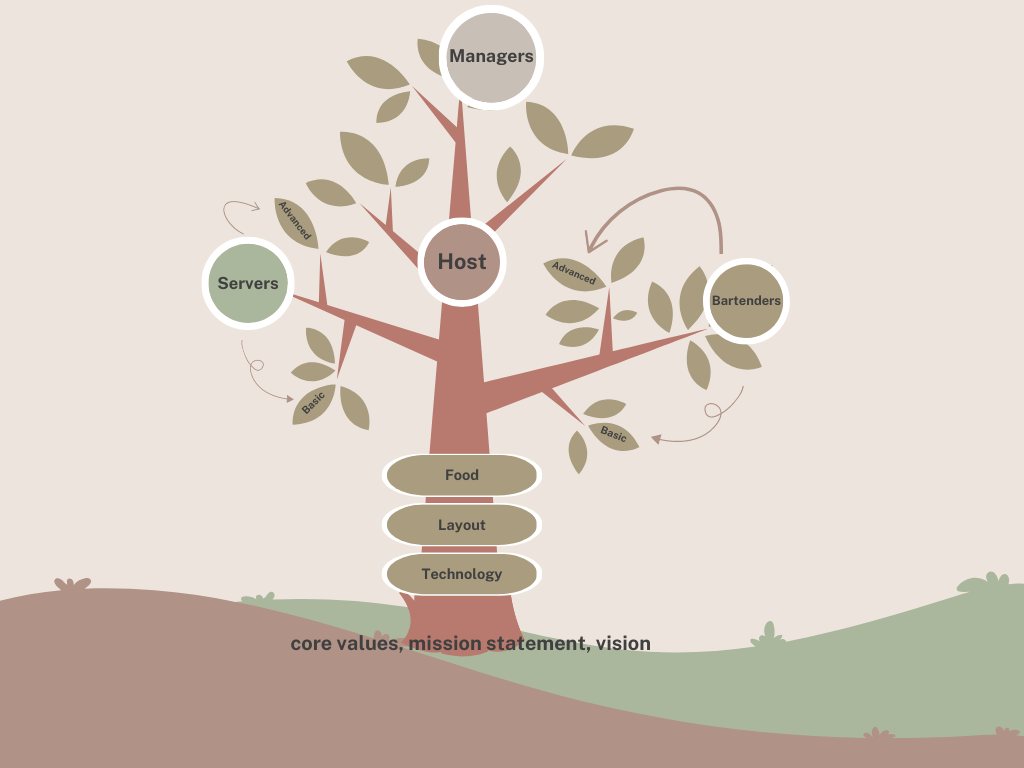
Source: Tablein
This methodology consists of four parts:
- The foundation: your restaurant’s core values, vision, and mission; things that every employee needs to be aware of and act in accordance with
- The trunk: basic skills every team member needs and specific characteristics of your restaurant
- Branches: these represent the individual roles at the restaurant and the specific skills they comprise
- The canopy: represents the responsibilities of the managers who connect and oversee the entire staff
You can apply the training tree visualization when developing your training manuals, for example.
In that case, you would be creating four distinct manuals (servers, hosts, bartenders, managers).
These manuals would contain specific information needed to execute the duties of each role successfully.
In addition, each manual would also contain identical sections that contain the knowledge every employee should have to keep operations running smoothly (the foundation and the trunk in our training tree model).
By applying this model, you’ll be able to provide every new employee with the individual training they need to do their job, as well as help them understand the practices, systems, and values at the core of your business.
With this knowledge always available, mistakes, wrong decisions, and subpar guest experiences are less likely to happen, meaning your restaurant can function at maximum efficiency.
Encourage Your Staff to Communicate
Everyone on your team, from the host all the way to your kitchen workers, will have an impact on your restaurant’s efficiency.
Therefore, removing misunderstanding, conflict, and communication breakdowns is vital for speedy, and high-quality service.
However, finding time (as well as space) for communication can be tricky.
One solution might be to make good use of the working hours before food service starts by, for instance, holding regular pre-shift meetings.
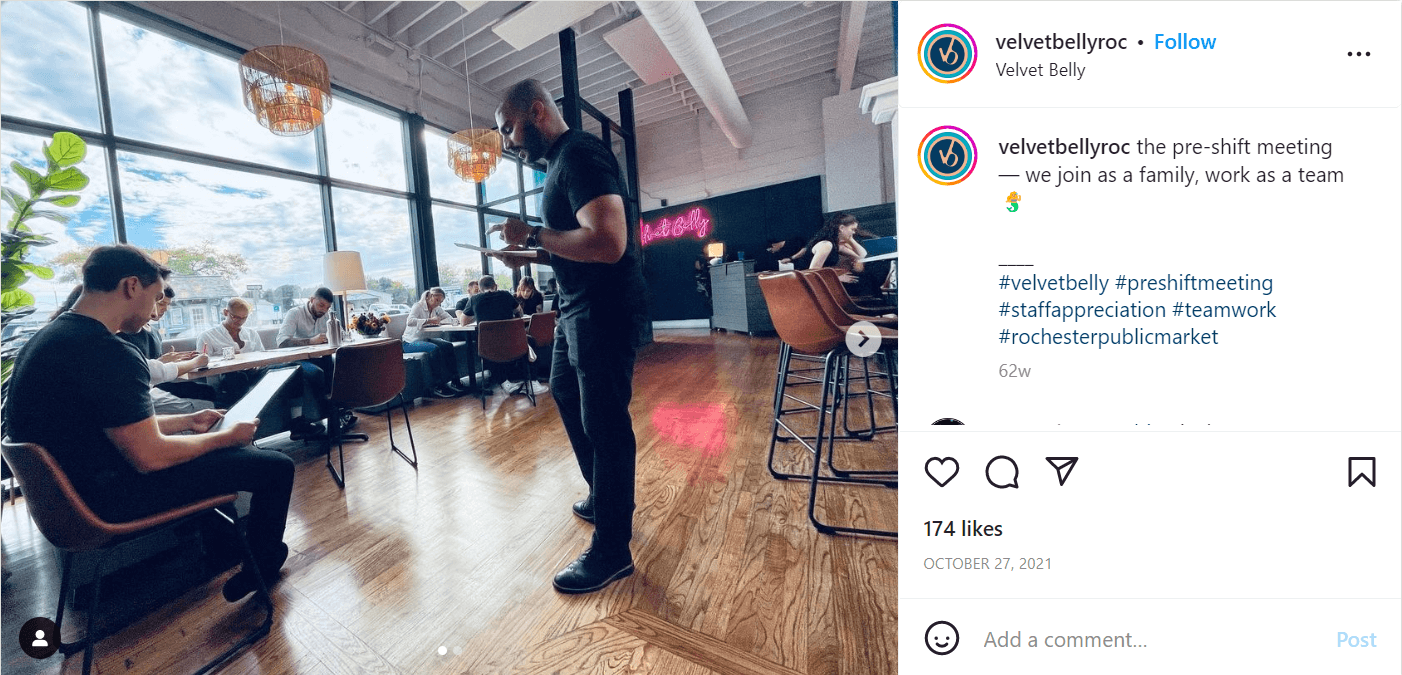
Source: Velvet Belly on Instagram
This type of meeting occurs when guests are absent from the restaurant and is led by the manager, who gathers all staff members to discuss recent developments, share tips and advice, and handle any issues that may be holding back the crew.
Here’s an example of an agenda for a pre-shift meeting to give you a better idea of how it works:
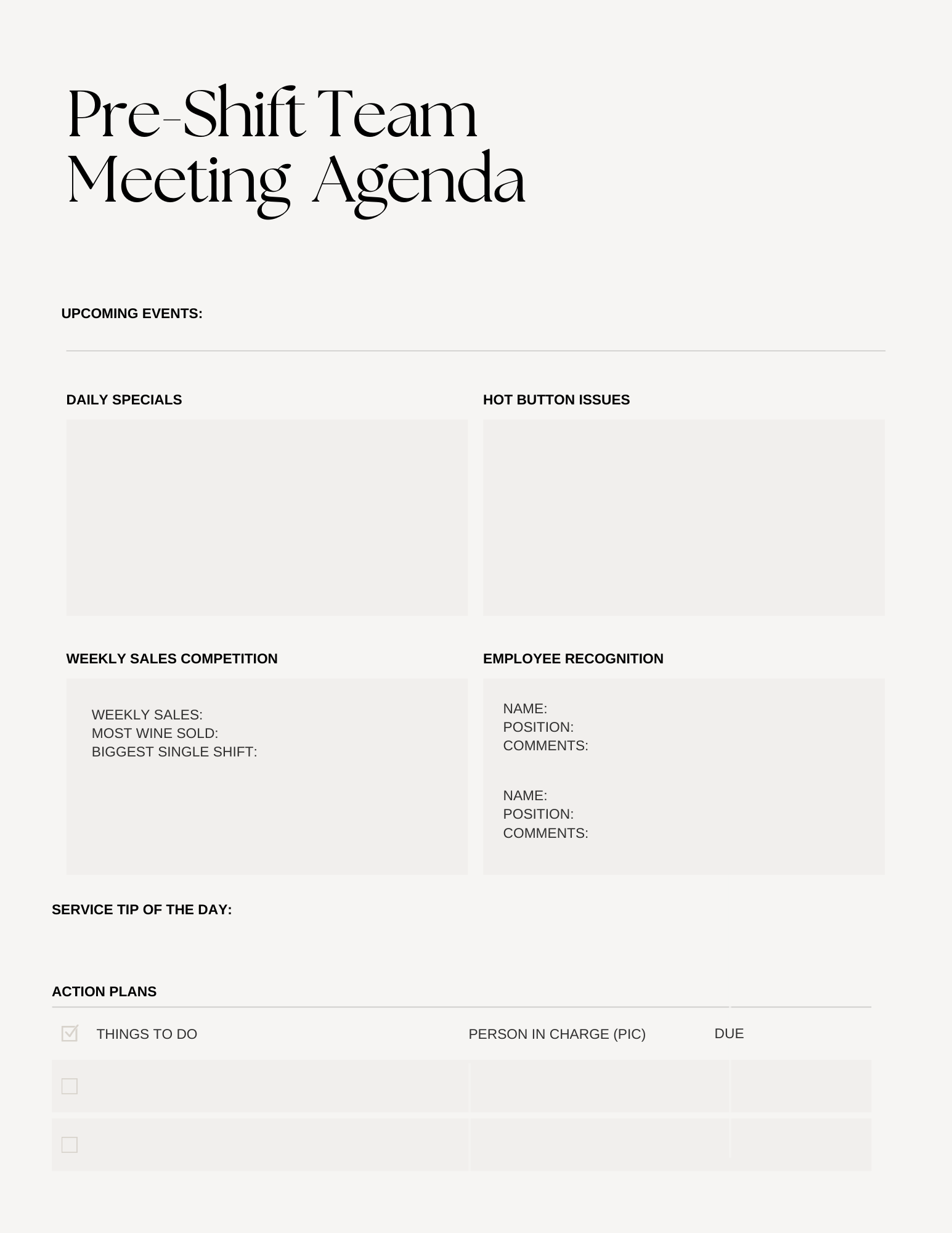
Source: Tablein
Pre-shift meetings are a good way to keep everyone on your staff productive and on the same page.
They also play an important role in engaging and motivating your team, which, as we have already determined, is crucial for restaurant efficiency.
In addition to this kind of formal gathering, it’s also a good idea to make time for employees to communicate and socialize in a more casual setting, perhaps over a shared meal.
In the restaurant industry, this is actually a cherished tradition commonly referred to as the family meal (or staff meal, or crew chow in some instances).
The very name hints at what this event is all about. At the start of the day (or sometimes after closing), the entire team sits down to share a meal prepared by the kitchen staff.
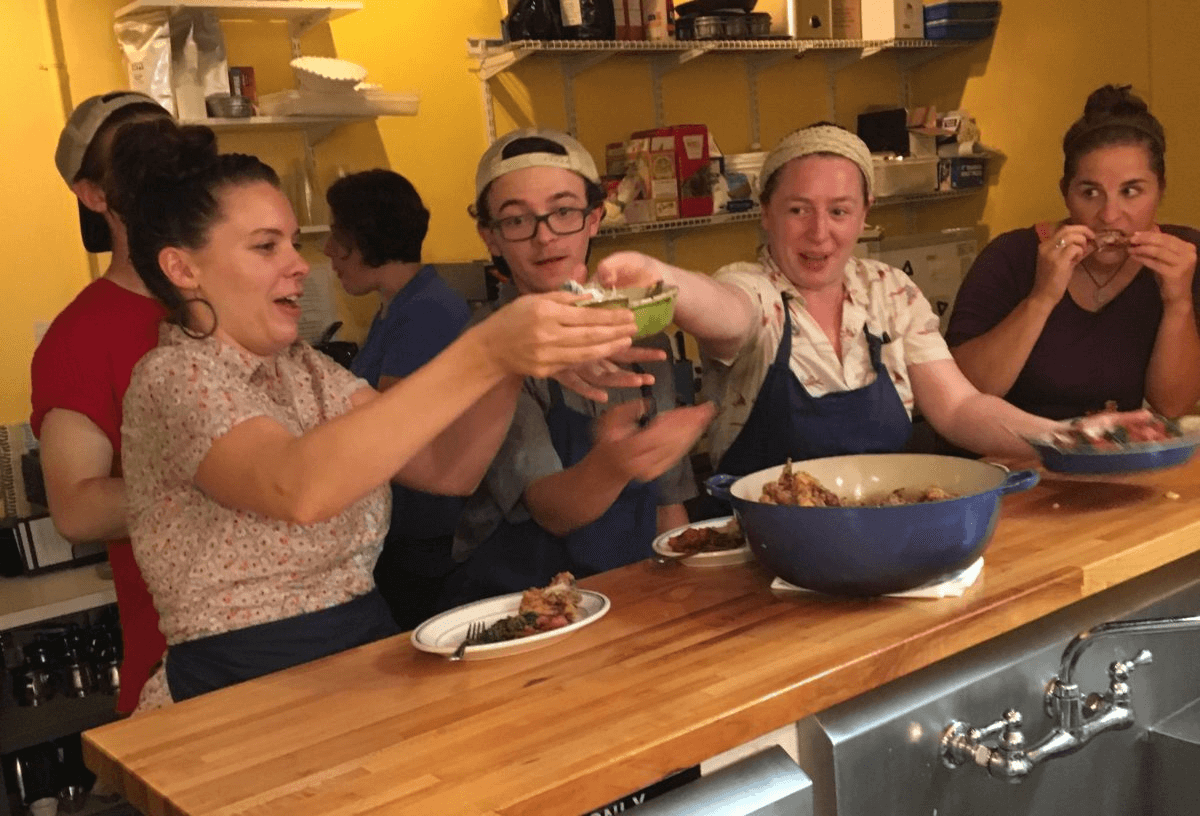
Source: The Cook’s Cook
The meal doesn’t have to include anything from the menu, but the chef that makes it commonly uses leftover or damaged ingredients to avoid food waste.
Also, in cases where restaurants boast a multicultural team, it’s common practice to use this opportunity to showcase ethnic food from the staff’s native countries.
The family meal allows the staff to form relationships and connect on a personal level.
This helps break down interpersonal barriers and enables the team to work together more efficiently, which reflects on the functioning of the entire restaurant.
So, both formal and informal modes of communication are vital for maximum efficiency at your restaurant. Nurture them every day, and your business should run like a well-oiled machine.
Make Sure Your Kitchen Is Organized
Restaurant kitchens are bustling yet extremely confined spaces where safety hazards lurk at every step.
Have a look at what an ordinary evening in a commercial kitchen can look like and try to count the number of times workers almost bump into each other.
Source: Le Gavroche on YouTube
We’re not exaggerating here.
According to the US Bureau of Labor Statistics, full-service restaurant workers have a higher injury rate than workers in other private industries, especially when it comes to burns, cuts, and lacerations.
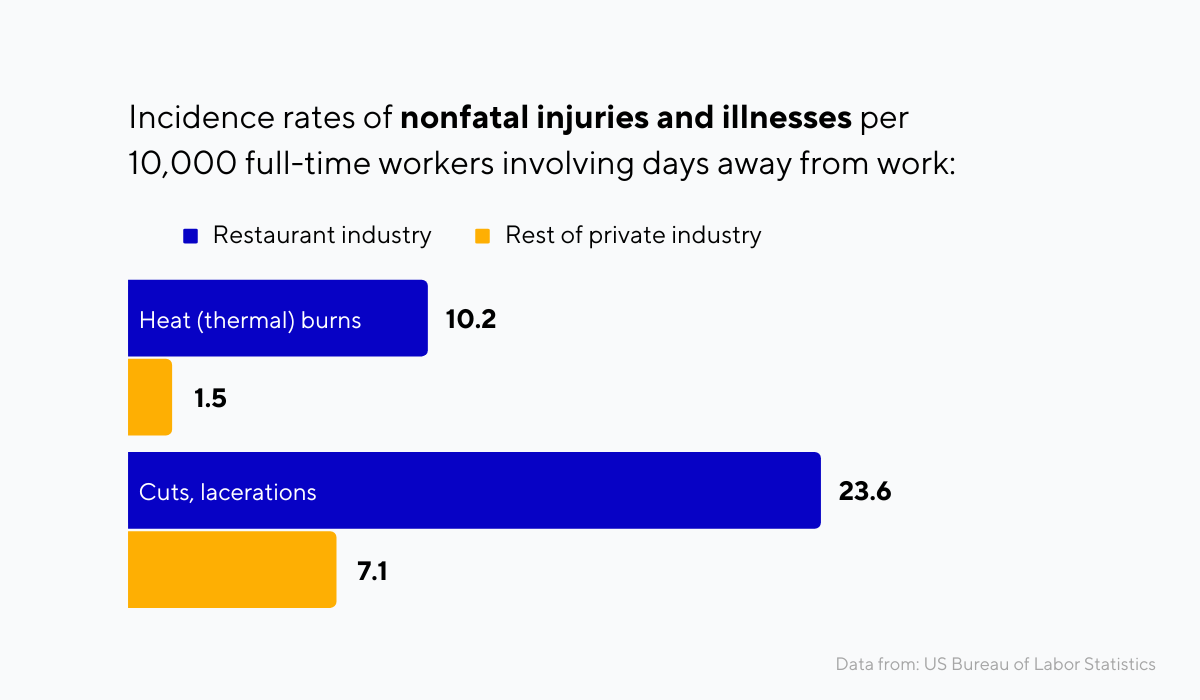
Source: Tablein
What does all of this have to do with efficiency?
First off, if your kitchen staff keeps tripping up or bumping into each other, a lot of plates will be dropped, and those dishes will have to be made again.
This means guests will have to wait longer, and ingredients, as well as kitchen materials, will go to waste.
Secondly, a high injury rate means that kitchen workers are incapacitated for a certain period (note that the above graph involves days away from work!) which results in a loss of time and increased labor costs.
Commercial kitchens will always be hectic, but there’s a lot you can do to make them safer, more efficient, and more organized.
For instance, your kitchen’s layout is very important in this regard, so try to zone the space in a way that minimizes collisions and interceptions.
A good way to do that is to place an island in the middle so that all movement is circular and one-way.
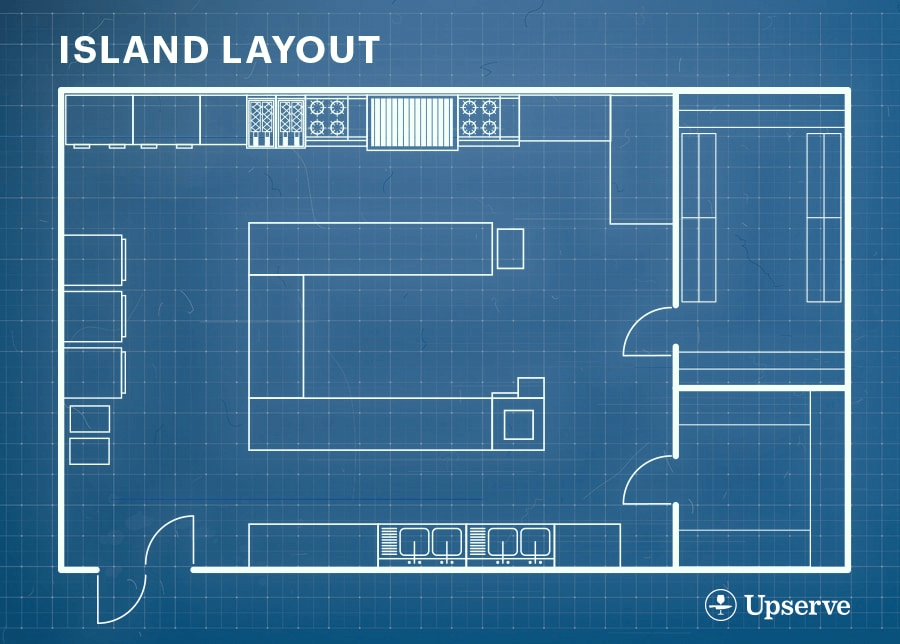
Source: Upserve
If there isn’t enough room for an island, you can also set up the stations so that each dish moves in just one direction (prep, cooking, service).
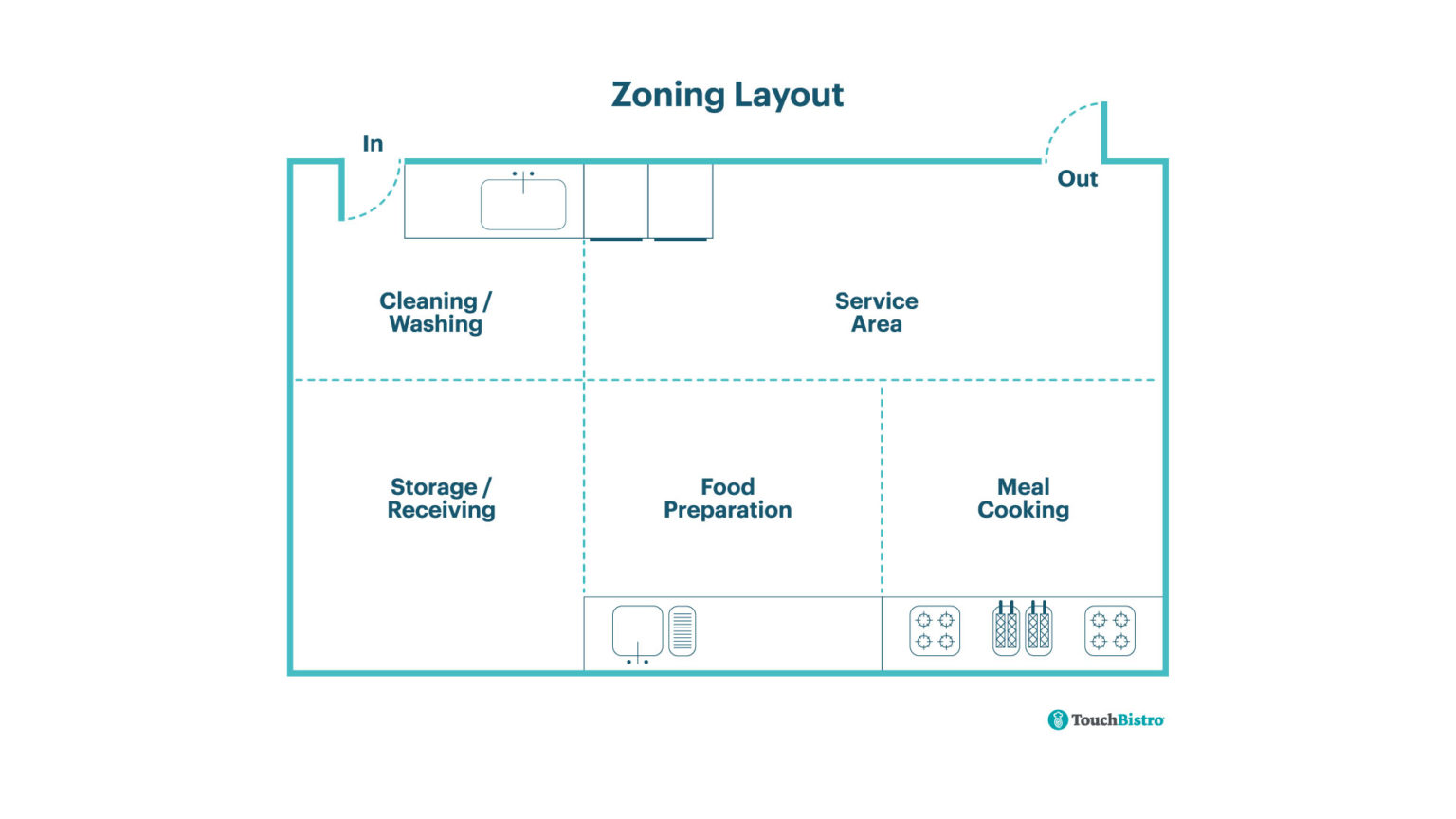
Source: TouchBistro
For their own part, your employees can be trained to avoid accidents, injuries, and collisions.
You can, for example, teach your kitchen staff to call out their movements and use safety words when handling sharp, heavy, or hot objects.
Here’s how the pros do it:
Source: Daily Cruzer on Youtube
With a perfect layout and mindful kitchen staff, accidents are much less likely to happen. And that makes your kitchen a safer and more efficient work environment.
Keep Track of Your Restaurant’s Inventory
Inadequate inventory management practices can put a serious strain on your restaurant’s budget and operations. In severe cases, a tenth of a restaurant’s inventory can go to waste.
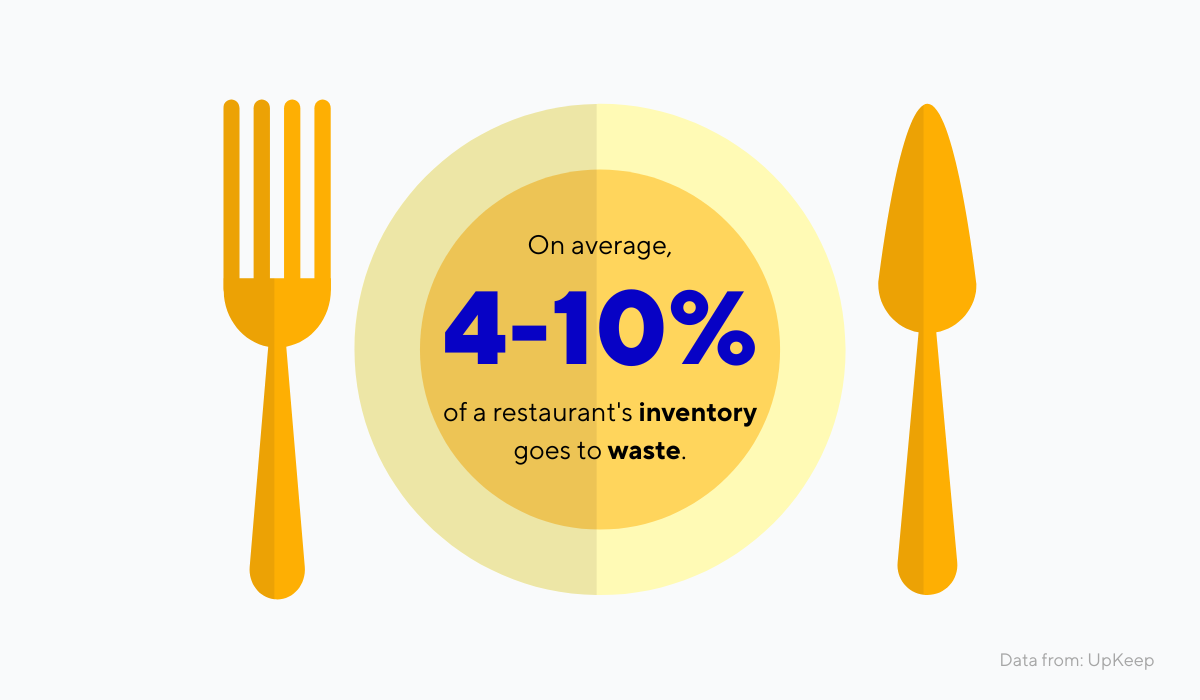
Source: Tablein
Wasting inventory isn’t just money down the drain. It also means you have to focus more on waste management and work more closely with your suppliers to secure a steady supply of fresh ingredients for your business.
So if you’re wasting more than 4-5% of your inventory, that might indicate you’re not being efficient in managing the materials and resources available to you and that some things need to change.
But where to start?
Well, it might be a good idea to have a look at how you’re storing inventory.
If your storage methods are chaotic or otherwise unsuitable, that could cause a lot of your ingredients to spoil, and they’ll need to be thrown away simply because your busy chefs couldn’t find them on time.
The solution to this problem is adopting storage practices that make your inventory as visible and as easy to reach as possible.
Here’s an example:
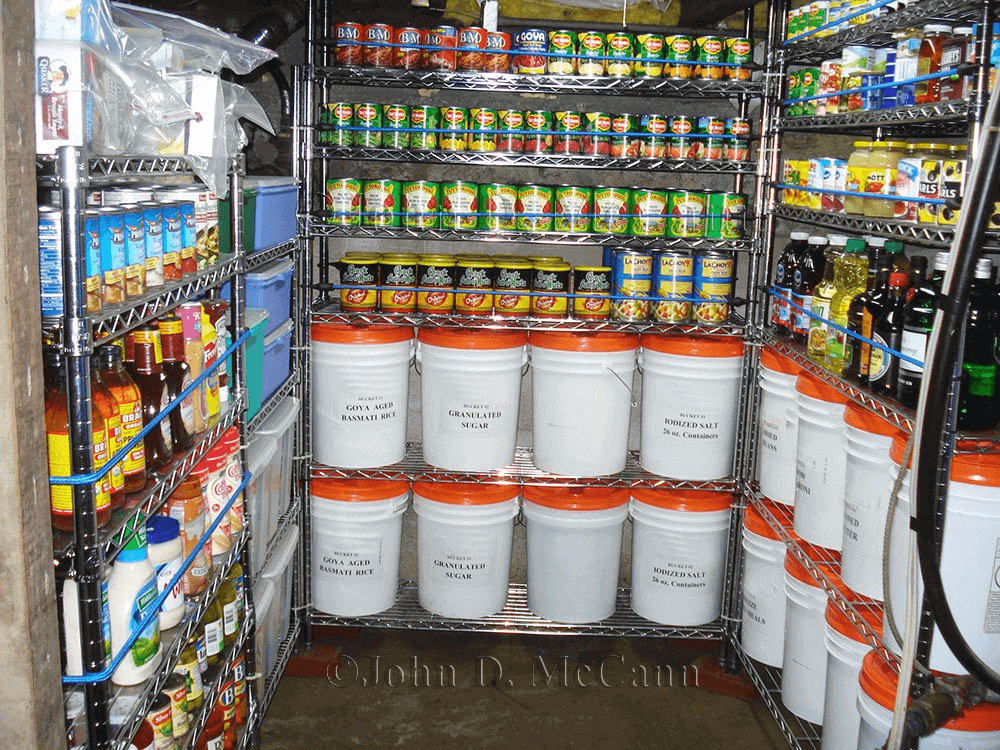
Source: Survival Resources
This pantry exhibits some excellent practices to follow in order to prevent inventory loss. For instance:
- Identical items are grouped together so they can be easily found and counted.
- Heavier items are placed on the lower shelves to prevent injuries and accidental spillages when moved.
- Every item is labeled, and every label faces forward so that items can be recognized and retrieved immediately.
Another principle that’s especially useful for perishable inventory is the FIFO (first in, first out) method.
The FIFO method simply means stocking newer items in the back of your shelves, behind older goods of the same type, so that those older ingredients get used first.
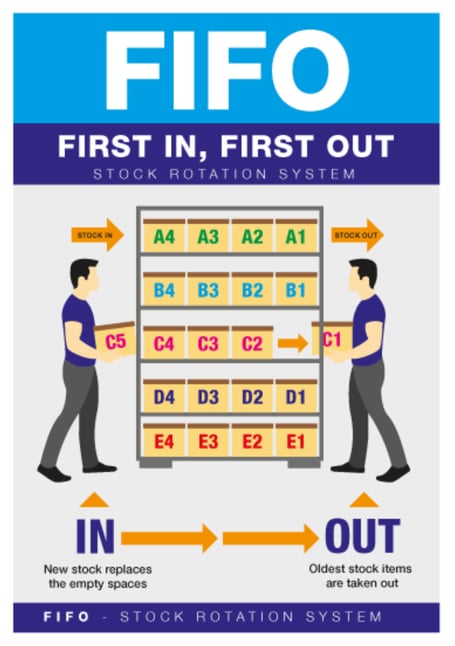
Source: Mileta
That way, you’re much less likely to see ingredients going bad because the more recently purchased ones were accidentally opened before the existing ones were depleted.
Long story short, if you can get those inventory waste figures down to around 4%, you’ll be much more efficient with the ingredients and supplies you do have on hand, which should reflect positively on your budget and workload.
You can do that by being smart about how you stock and use the inventory in your storage.
Invest in a Restaurant Reservation System
Our last tip for improving the efficiency of your restaurant is probably also the most valuable one.
A poorly devised table reservation system can throw your entire business out of balance and negate the effects of your other efficiency-boosting efforts.
Some problems that can occur here include:
- Double bookings
- Lost reservations
- No-shows at busy times
- Uncaptured reservations outside of working hours
Fortunately, an online reservation system can eliminate all of these issues almost instantly.
A dedicated software solution allows guests to manage their own reservations. They just need to hop online and effortlessly book a table on your website.
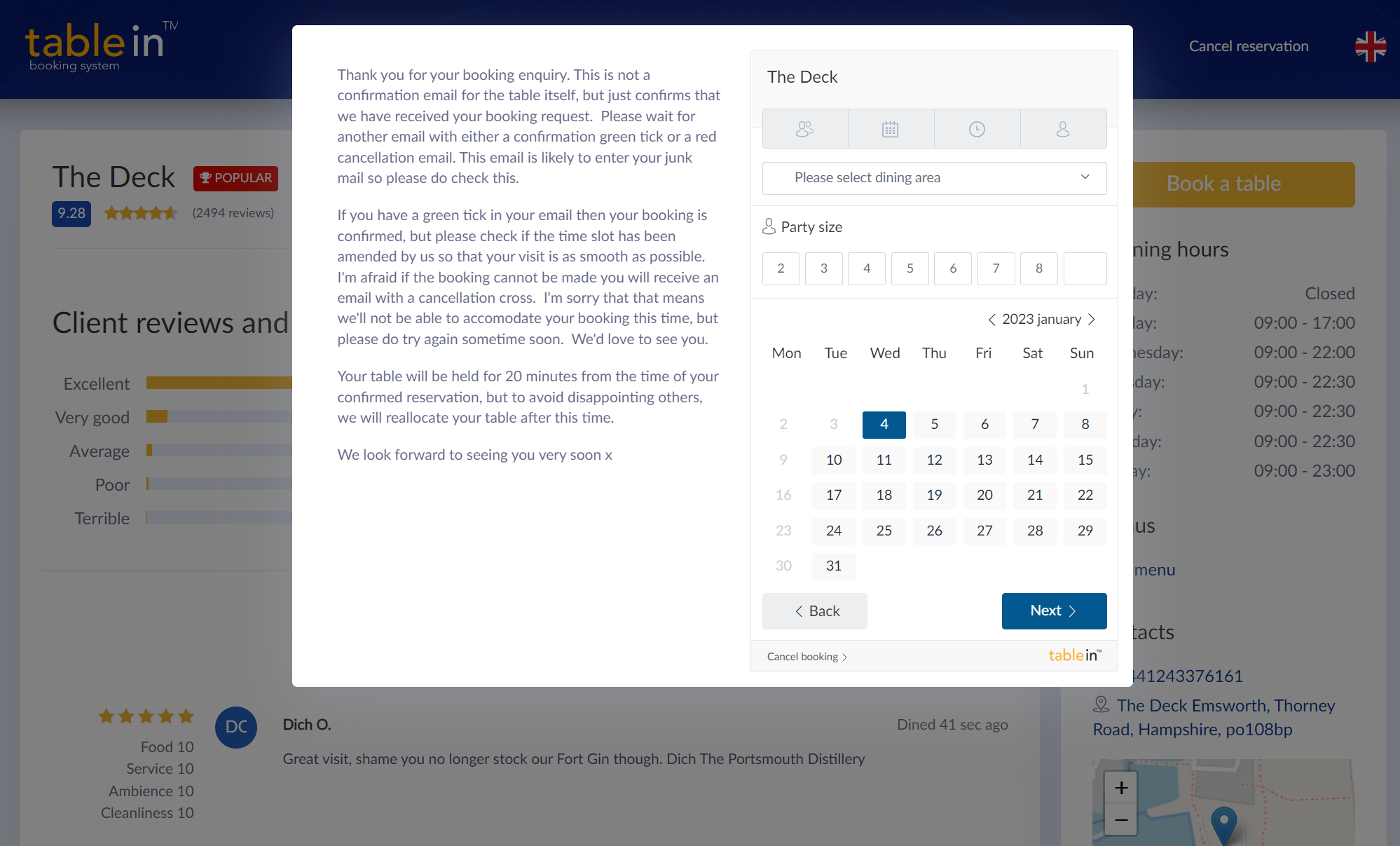
Source: The Deck on Tablein
The system automatically registers their reservation and displays it in a handy calendar format so you can easily get an overview of your evening.
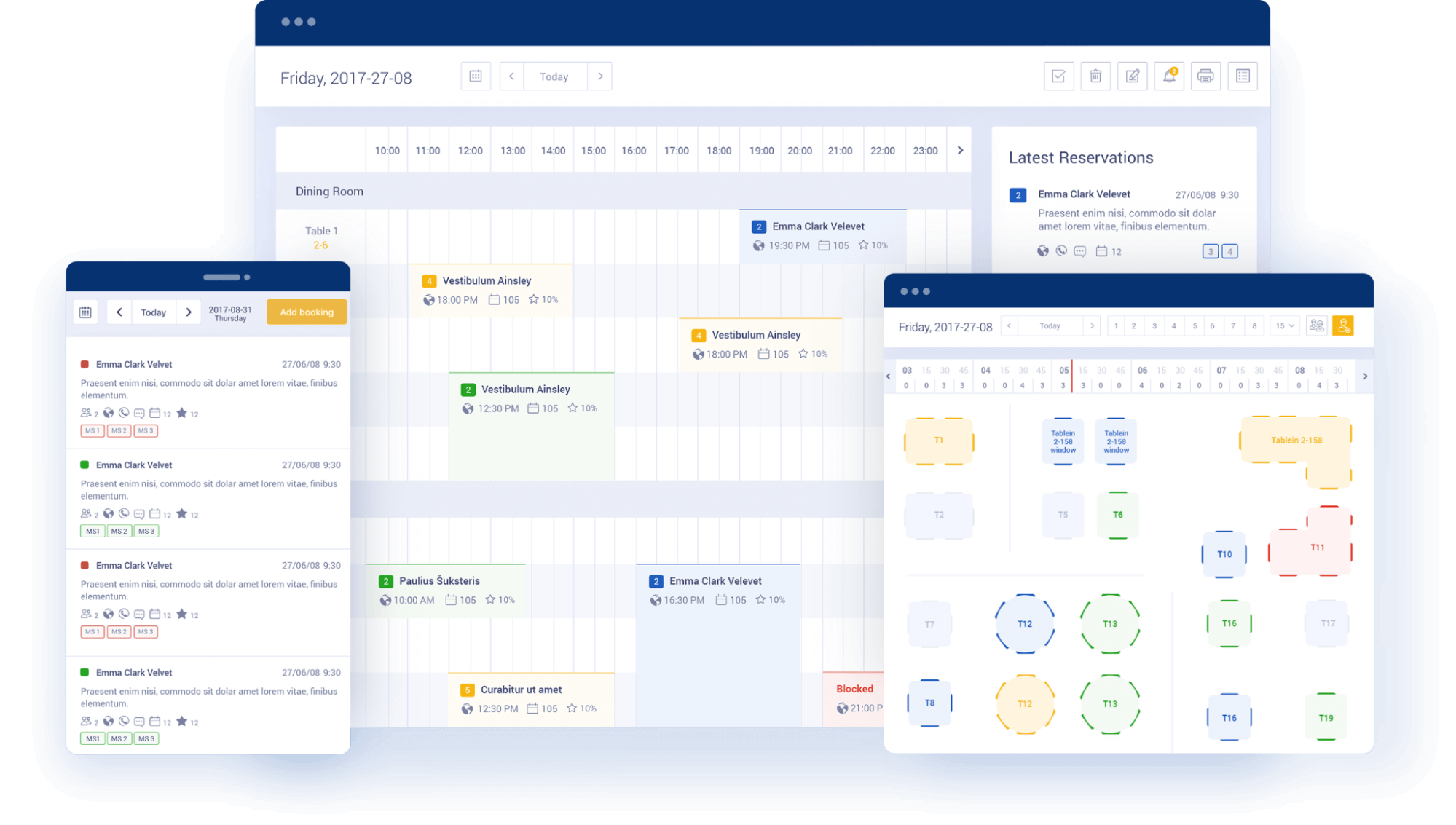
Source: Tablein
This should help you eliminate the problems of lost reservations and double bookings, as well as enable you to capture bookings even when the restaurant is closed, as your reservation system is never off the clock.
But that’s just the tip of the iceberg.
Advanced reservation systems also have additional features that make it much more likely that the guests who booked a table will actually show up.
For instance, Tablein has automated notifications (SMS and email) that will activate ahead of the set date to remind the guest that they have a reservation.
It also integrates with popular online payment platforms such as Stripe and PayPal, allowing you to take deposits and prepayments for reservations, meaning you won’t risk losing revenue in case of no-shows.

Source: Tablein
To sum up, a reservation system enables you to keep all of your bookings in perfect order, with a minimal margin of error.
It also helps you ensure that guests who have made a reservation actually turn up, meaning you’ll greatly reduce the chance of seeing empty tables during the dinner rush.
In the restaurant business, that’s precisely what peak efficiency looks like, so if improving efficiency is your goal, we definitely recommend investing in a restaurant reservation system.
Conclusion
The key takeaway from this article is that efficiency depends on how you organize the most important aspects of your restaurant: staff, space, inventory, and guests.
By making improvements in each of these categories (using the right approach to training, mindful stocking methods, or clever software), you’ll be raising the overall efficiency of your entire restaurant and helping it run smoothly, day in and day out.
As that happens, you’ll soon see the results of your efforts, such as improved worker happiness, increased revenue, excellent customer reviews, and reduced waste.
Get a 30-day Exclusive Trial
As a Tablein blog reader, you’re eligible for an exclusive 30-day free trial to experience our simple reservation solution for your restaurant.
Enter your business email, and we’ll send you all the steps needed to create your account.
Share this
You may also like

Pros & Cons of Taking Reservations at Your Restaurant

5 Common Restaurant Complaints and How to Handle Them
